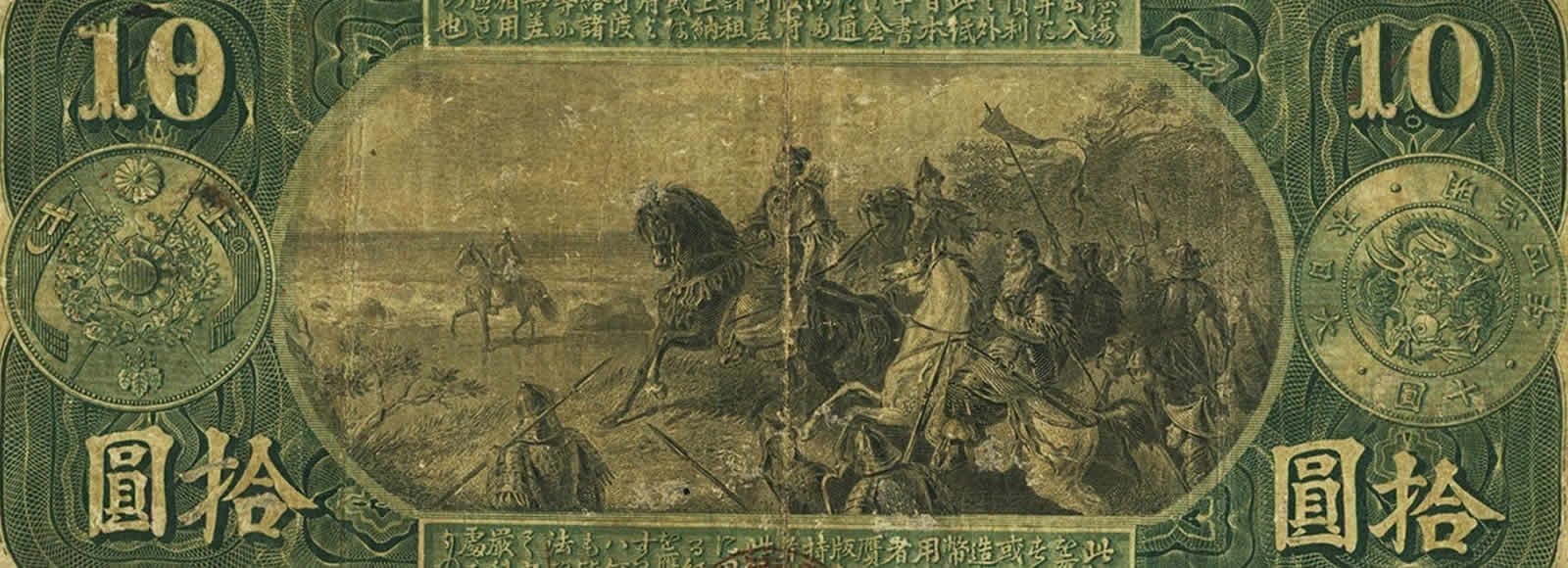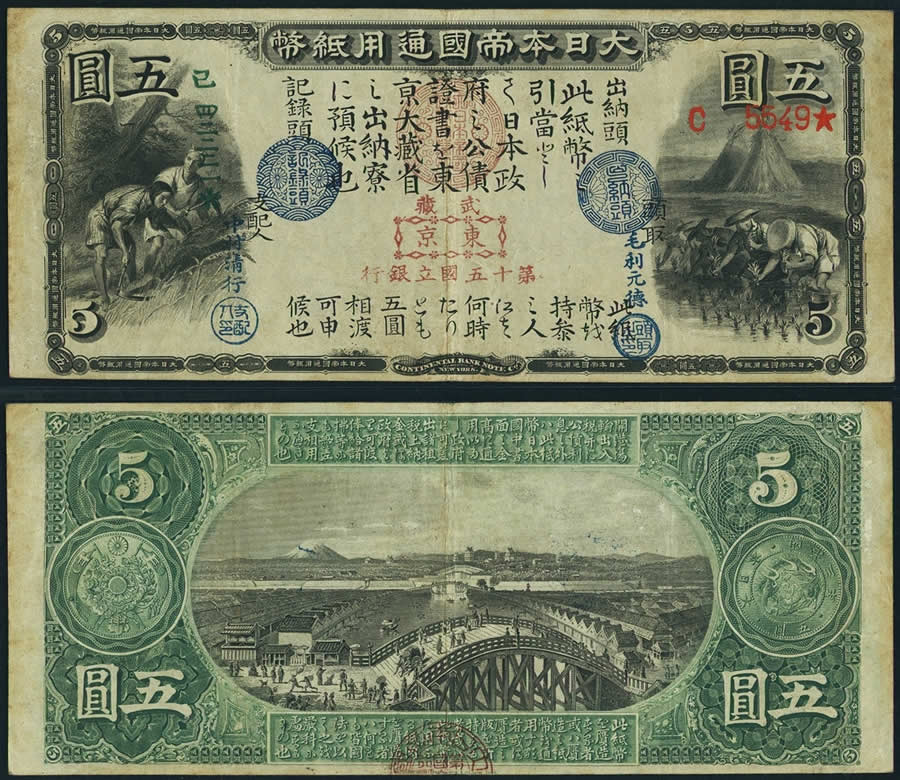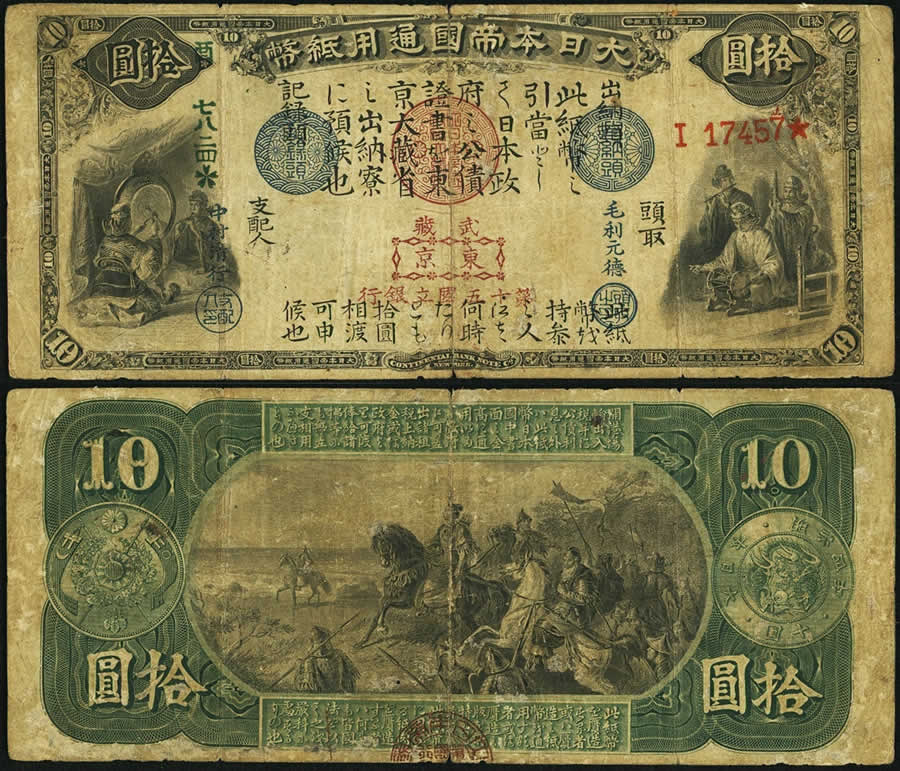JAPANESE ‘CHARTER’ ISSUES CONSIDERED RARE, SELDOM APPEAR AT AUCTION
By Keith Esskuchen
In December 1872, Japan adopted the National Bank Decree in an effort to modernize banking throughout the country. The basis of this initiative was fundamentally modeled on America’s national banking system and similar with their usage of charter numbers and location identifications overprinted on the banknotes.
WORLD CURRENCY
EVENT
HKINF WORLD CURRENCY SIGNATURE® AUCTION 4013
June 26-28, 2019
Live: Hong Kong
Online: HA.com/4013a
INQUIRIES
Dustin Johnston
214.409.1302
Dustin@HA.com
Thirty-two charters were recognized with the initial issuance of banknotes in 1873, which later expanded to a total of 153 charters by the second issuance in 1877. However, this national banking system was short-lived as the banks lost their note issuing privileges following the National Bank Decree in 1883 due to gold convertibility concerns. Between 1896 and 1899, all of the original national banks disappeared or were absorbed by other banking institutions.
The first series from 1873 are considered the favorite and most sought after Japanese banknotes by collectors due to their exceptionally detailed vignettes, which feature a variety of historical and mythological figures and scenes. These sensationally designed notes were engraved and printed by the Continental Banknote Company in New York and produced in five denominations, all convertible in gold.
The lowest denomination of this set is the 1 yen. This beauty exhibits an ancient warship and the mythical warrior Kamitsukeno no Taji on the face, while the back displays a large vignette depicting the unsuccessful 13th century Mongol invasions of Japan that were undertaken by Kublai Khan to conquer the Japanese archipelago.
The next denomination is the 2 yen. Two vignettes of 14th century warriors Kojima Takanori and Nitta Yoshisada are depicted on the front, while a pleasing vignette of the Imperial Palace in Tokyo is seen on the back. The Imperial Palace is renowned as the primary residence of the Emperor of Japan.
The 5 yen shows scenes of local villagers harvesting and planting rice crops with the back depicting a scenic vignette of Mount Fuji as viewed from the 17th century Nihonbashi Bridge in Tokyo.
These notes are part of the Yuri Solovey Collection of Japanese Currency offered in Heritage’s June World Currency auction.
The last note of this group is the 10 yen. It proudly shows off two vignettes representing Gagaku, the ancient imperial ceremonial court music and dancing. The back shows a large, detailed vignette of the legendary Empress Jingu riding into battle. It is said the empress ruled around 200 A.D. and led large battle campaigns during her reign; however, many controversies exist in regard to the factualness of these legends due to limited evidence available from this early time period. Empress Jingu’s portrait was later featured on the 1881 issues, thus she became the first woman to be featured on a Japanese banknote.
In relation to gold convertibility of this series of banknotes, each note displays the obverse and reverse of the corresponding value 1871 gold coin alongside the central vignette on the back.
Due to their limited issuance and redemption rates, all of these extraordinary examples detailed above are considered rare and seldom appear at auction, especially the higher denominations. A 1873 10 yen being offered in Heritage’s upcoming world currency auction is the sole example graded by Paper Money Guarantee, and only three examples of the 5 yen have been graded. Estimates for these historical notes range from around $5,000 for the 1 yen denomination to around $30,000 for the 10 yen.
 KEITH ESSKUCHEN, a consignment director in Heritage Auctions’ world currency department, lived in Japan from 2006 through 2015.
KEITH ESSKUCHEN, a consignment director in Heritage Auctions’ world currency department, lived in Japan from 2006 through 2015.
This article appears in the Spring/Summer 2019 edition of The Intelligent Collector magazine. Click here to subscribe to the print edition.



